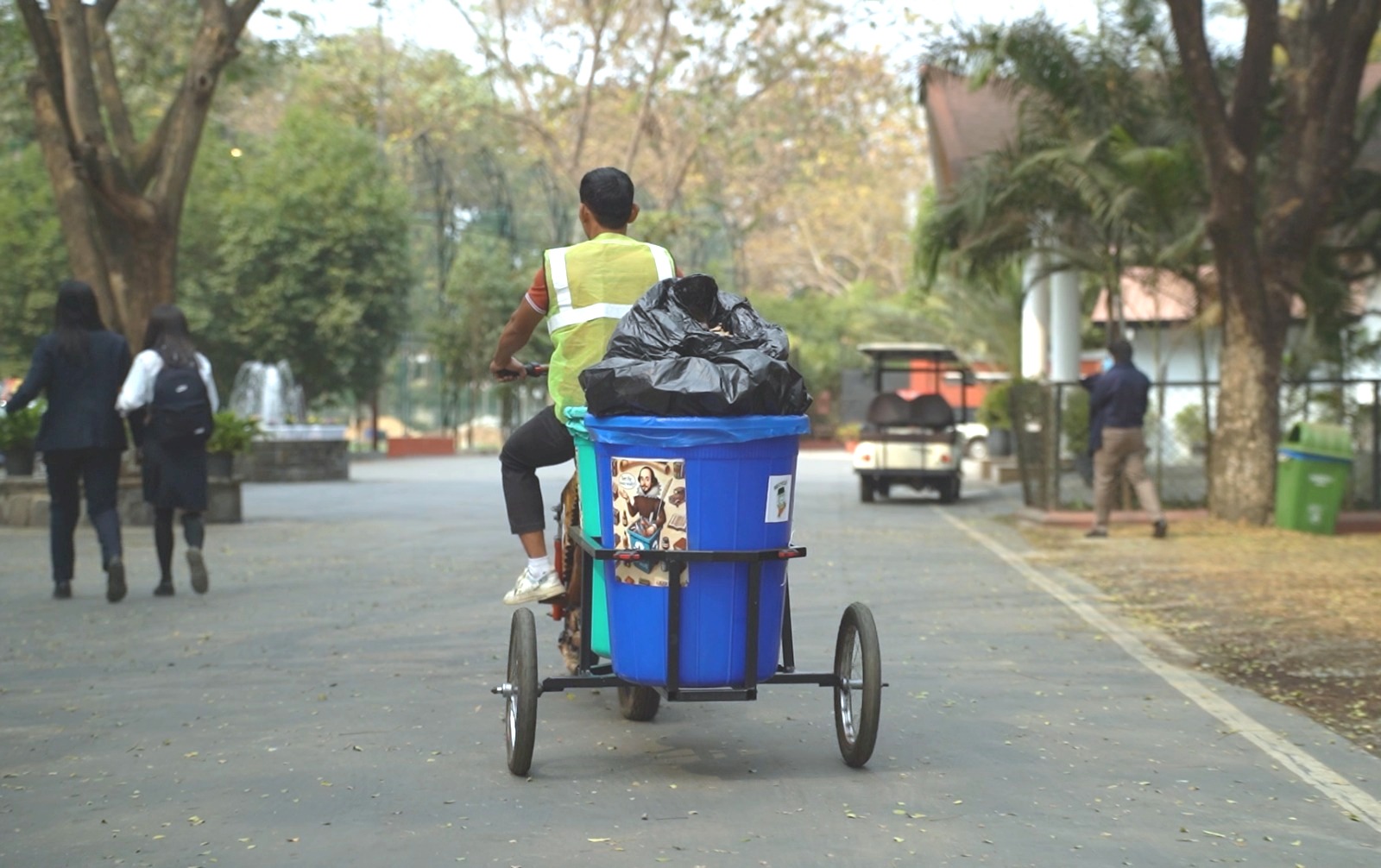SUNDAY, JUNE 08, 2025
- Home
- Segregation at the heart of Dimapur’s waste problem
Segregation at the heart of Dimapur’s waste problem
Published on Jun 1, 2025
Share
DIMAPUR — For years now, proper waste management in Dimapur—the state’s commercial nerve centre—has been MIA (missing in action).
- The city continues to rely on open dumping due to the absence of a waste segregation plant, rendering effective waste segregation nearly impossible. While municipal bodies are tasked with waste management, many argue that proactive practices should begin at the source—the household level.
- Per the accounts of environmentally conscious organisations,
the root of Dimapur’s waste problem lies in the failure to segregate at source
and a general indifference toward responsible waste disposal.
- These groups are now calling on the urban local bodies (ULBs) to initiate widespread awareness campaigns to educate the public about waste segregation at the source.
- Niksungla, founder-chairman of Living for Environment (LiFE), a research-based organisation focusing on waste management in the state, shared insights from their findings. “In Dimapur, around 30-40% of waste is salvaged by households and sanitation workers, while the rest ends up in dumpsites,” she said.
- LiFE does not handle waste directly but conducts assessments to understand its sources and the systemic issues surrounding it.
- One concerning observation is the contamination of plastic waste by tobacco juice and other materials in public office dustbins. “This mixed waste cannot be segregated and is environmentally harmful, eventually ending up at dumpsites,” she added.
- She also pointed out that the trend in modern waste management is leaning towards decentralised systems and zero-waste initiatives. Centralised waste management plants, she reasoned, are not cost-effective.
- “Public or voluntary participation is still very low in Nagaland compared to other states,” she shared, urging schools to actively involve students in waste management activities.
- According to her, despite awareness among a small section of the population, the overall community remains complacent. “Only a fraction of the population is making efforts, and their impact is too small to create significant change,” she lamented.
- She further highlighted that waste management discussions largely centre around Dimapur and Kohima, with minimal focus on rural areas. The absence of waste data from these areas suggests either a continued reliance on traditional methods such as burning, burying, or dumping in water bodies or simply a lack of reporting, she said.
- Green Guard founder Khriemelie Metha also observed an alarming lack of waste segregation at the household level. He maintained that municipalities must take responsibility for instituting a comprehensive waste management system.
- He also underscored the need for Information Education and Communication (IEC) centres that offer both theoretical and practical training on waste segregation. “Awareness is key. Households need to be taught the importance of segregation, and collection systems must reflect this knowledge,” he said.
- He further pointed out the inefficiency of garbage trucks that lack segregation compartments. “If municipalities fix the supply chain, the issue becomes much more manageable,” Metha suggested, adding that most people consider their responsibility over once their garbage is handed to sanitation workers.
- He proposed an alternative treatment plan that involves encouraging local and recyclable product use, many of which are now offered by home-grown start-ups. “Even in the absence of a segregation plant, using biodegradable products can significantly reduce the waste burden and support a plastic-free Nagaland,” he asserted.
- Niksungla concurred, stating that dealing with modern, complex waste demands serious attention to source segregation. “Segregating at source makes processing easier, with only about 10% of waste requiring landfilling,” she explained. She recommended using three bins—for organic, non-organic, and sanitary waste—as an effective practice.
- Metha stressed that Nagaland needs strong policies for waste management. “With the formation of ULBs, I believe policies will be framed soon. A roadmap must be created to enforce these policies effectively through legislation,” he said.
- Niksungla proposed that municipalities should begin by establishing baseline data. “They need to understand the current household waste data. Start with one ward, make it a model, and then replicate it,” she recommended.
 A volunteer from a waste management organisation removes
segregated waste. (EM Images)
A volunteer from a waste management organisation removes
segregated waste. (EM Images)
E-waste disposal- Dimapur is also home to Nagaland’s first e-waste collection centre, e-CIRCLE, which was officially authorised by the Nagaland Pollution Control Board on September 17, 2018. The centre is now a crucial part of the state's e-waste management efforts, supported by both government and private sectors.
- Sowete-ü K Lekro, founder and managing partner of e-CIRCLE, noted that while e-waste collection from households remains minimal, the centre has seen improvement in collections from bulk consumers such as government offices and educational institutions.
- E-waste, also known as Waste Electronic and Electrical Equipment (WEEE), includes outdated or malfunctioning appliances and accessories. “Our collection is done quarterly, and we average around 3.5 tonnes per cycle,” Sowete explained.
- Initially, e-CIRCLE teams would visit repair shops and scrap dealers in Dimapur, but high prices and reluctance to part with valuable components led them to discontinue this approach. “Scrap dealers often dismantle parts, making the waste non-recyclable,” she said.
- She also shared that collaboration with municipal bodies is not feasible without proper waste segregation. Although a partnership between Dimapur Municipal Council and e-CIRCLE was initiated in 2019, it was discontinued due to impracticality in collecting from households.
- Despite these hurdles, e-CIRCLE has conducted awareness
activities in Dimapur, Chümoukedima, Kohima, Mokokchung, and Jalukie and is
planning to expand into Tuensang. “Public response, especially from Dimapur and
Kohima, has been encouraging,” she added.
Related Stories
National Green Tribunal raps Dimapur Municipal Council over waste mismanagement
A piling concern: Dimapur's waste management crisis
East Dimapur Town Council prohibits waste dumping in Dhansari river, ponds

